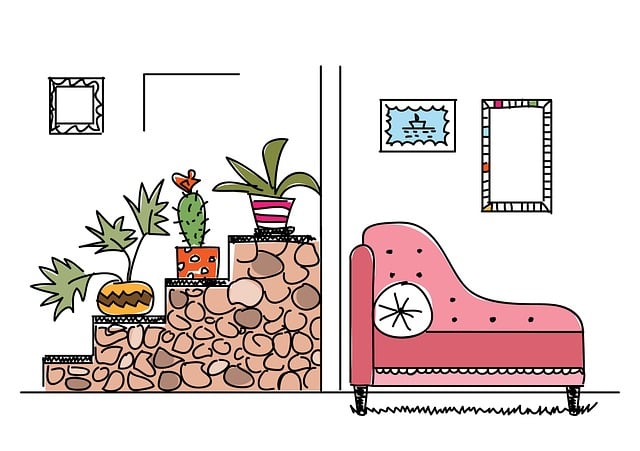HVAC systems are vital for comfort and indoor air quality in homes and businesses, requiring regular maintenance like cleaning and part replacement to ensure efficient operation. Regular check-ups by trained technicians extend equipment lifespan, improve performance, enhance indoor air quality, and reduce energy consumption. Homeowners should look out for red flags like reduced cooling efficiency, unusual noises, inconsistent temperatures, and higher energy bills, addressing issues early through preventive measures, inspections, filter cleaning/replacement, and system upgrades under the umbrella of home repair and maintenance.
In the realm of home comfort and energy efficiency, proper HVAC maintenance and repair are paramount. Understanding the intricacies of Heating, Ventilation, and Air Conditioning systems is the first step towards optimal performance. This article delves into the essentials of regular maintenance, guiding you through common issues and troubleshooting tips. From identifying red flags to seasonal care, we equip you with knowledge for both DIY fixes and professional services. Discover cost-effective strategies to maximize your HVAC system’s lifespan, ensuring a comfortable and efficient home environment through expert Home Repair and Maintenance.
- Understanding HVAC Systems: Unveiling the Basics of Heating, Ventilation, and Air Conditioning
- Regular Maintenance: Why It's Crucial for Your Home Comfort and Energy Efficiency
- Common HVAC Issues: Identifying Red Flags and Early Warning Signs
- The Art of Troubleshooting: A Step-by-Step Guide to Simple Fixes
Understanding HVAC Systems: Unveiling the Basics of Heating, Ventilation, and Air Conditioning
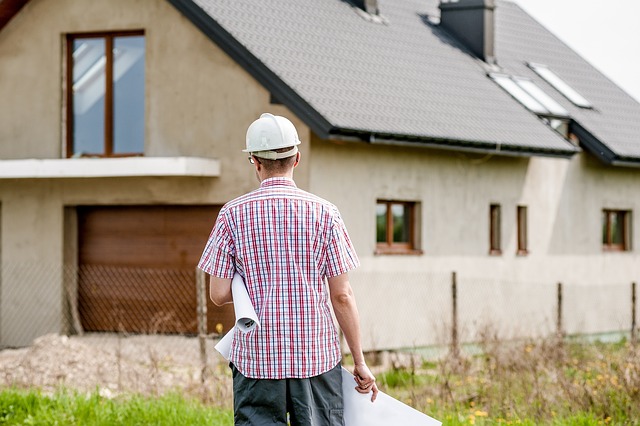
Heating, ventilation, and air conditioning (HVAC) systems are integral to modern living, providing comfort and indoor air quality in homes and businesses. Understanding the basics of these systems is crucial for anyone involved in home repair and maintenance. HVAC comprises three primary functions: heating, which warms indoor spaces during colder months; ventilation, ensuring a constant flow of fresh air; and air conditioning, which cools and dehumidifies the air.
These systems work together to maintain optimal temperature and humidity levels. Homeowners should familiarize themselves with key components like furnaces, air conditioners, thermostats, ducts, and filters. Regular maintenance, including cleaning, inspecting, and replacing parts, is vital to keep these systems running efficiently and reliably. By prioritizing HVAC care, property owners can avoid costly breakdowns and ensure a comfortable living environment throughout the year.
Regular Maintenance: Why It's Crucial for Your Home Comfort and Energy Efficiency
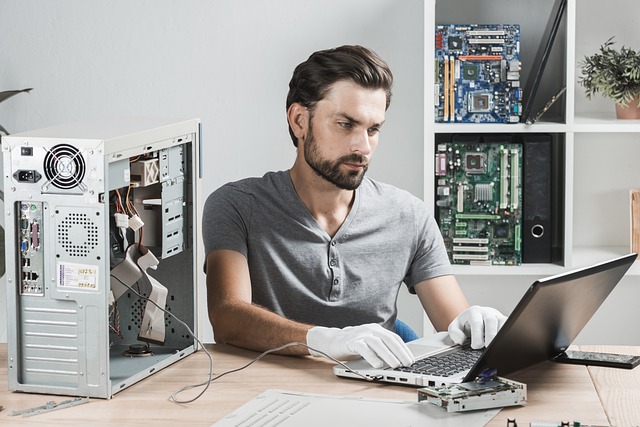
Regular maintenance is a cornerstone of efficient and effective HVAC systems, offering significant benefits for both home comfort and energy savings. By scheduling routine check-ups, you ensure that your heating, ventilation, and air conditioning units operate at their optimal capacity. This proactive approach allows for early detection of potential issues, preventing minor problems from escalating into costly repairs.
During maintenance visits, trained technicians inspect various components, including filters, coils, and fans, cleaning or replacing them as needed. They also check for leaks in the refrigerant system, ensuring it operates safely and efficiently. These routine tasks not only extend the lifespan of your HVAC equipment but also enhance its performance, resulting in improved indoor air quality and reduced energy consumption. In the broader context of home repair and maintenance, prioritizing regular HVAC servicing is a wise investment that pays dividends throughout the year.
Common HVAC Issues: Identifying Red Flags and Early Warning Signs
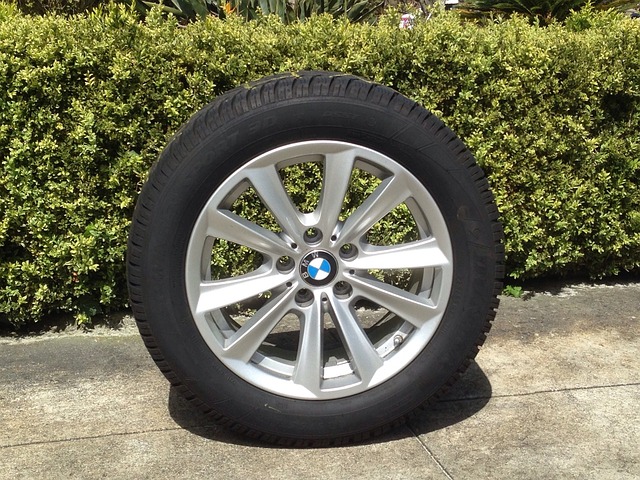
Common HVAC Issues: Recognizing Red Flags and Early Warning Signs
Many homeowners often overlook the signs of potential issues with their heating, ventilation, and air conditioning (HVAC) systems until they experience significant breakdowns or discomfort in their living spaces. Regular home repair and maintenance can prevent such problems from escalating. Some common HVAC issues include reduced cooling efficiency, strange noises coming from the system, irregular temperature variations throughout the house, and increased energy bills. These red flags may indicate a range of problems, from leaky ducts to malfunctioning thermostats or even severe equipment failure.
Early detection is key in HVAC maintenance. By being vigilant about these signs, homeowners can schedule preventive measures like cleaning or replacing filters, checking for leaks, and ensuring proper calibration of thermostats. Regular inspections by qualified technicians can also help identify minor issues before they become costly major repairs. Staying proactive in home repair and maintenance not only saves money but also ensures a comfortable living environment throughout the year.
The Art of Troubleshooting: A Step-by-Step Guide to Simple Fixes
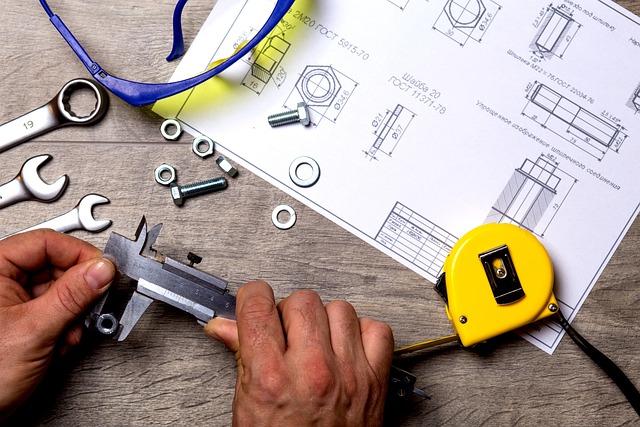
Troubleshooting HVAC issues can seem daunting, but with a systematic approach, homeowners can often fix simple problems themselves, saving time and money on home repair and maintenance. Start by identifying the specific problem—is it an unusual noise, poor heating/cooling performance, or a faulty thermostat? Once you’ve pinpointed the issue, follow these steps:
1. Check Basic Components: Inspect easily accessible parts like filters, ducts, and thermostats for blockages or damage. A dirty filter can restrict airflow, while a malfunctioning thermostat could be misreading temperatures. Simple cleaning or replacement might resolve the problem.
2. Research Common Issues: Many common HVAC issues have well-documented solutions online. Search for the specific error code or symptom to find guides tailored to your model. Online forums and manufacturer websites are valuable resources for troubleshooting tips.
3. Perform Basic Maintenance: Regular maintenance can prevent many problems. This includes changing air filters at recommended intervals, cleaning vents, and lubricating moving parts (if applicable). A well-maintained system runs more efficiently and reliably.
4. Consider System Age and Efficiency: If your HVAC unit is old or energy bills are unusually high, it might be time for an upgrade. Newer systems often come with smart features that improve efficiency and comfort while reducing long-term maintenance needs.
HVAC systems are integral to our daily comfort, making regular maintenance and prompt repairs vital for both home efficiency and serenity. By understanding these systems and their common issues, homeowners can take proactive steps towards optimal performance. Armed with basic troubleshooting skills, folks can efficiently navigate minor problems, saving time and money. Remember, when it comes to home repair and maintenance, a well-maintained HVAC system is key to enjoying a comfortable and energy-efficient living space.
